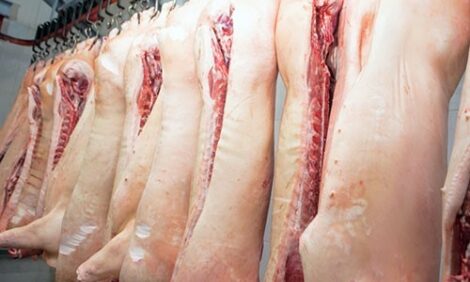



Weekly Overview: Feed: Price Trends, Analysis and a Predictor of Welfare Issues?
ANALYSIS - Two new market reports indicate better times ahead for pig producers, with feed prices predicted to fall. Recently published research has revealed a better way to evaluate the nutritive value of meat and bone meal (where it is permitted as a feed ingredient) and a new Swedish study shows that feeding behaviour among growing pigs may predict future tail-biting - an important welfare issue that can lead to significant economic losses for the industry.Two reports from Purdue University in the last week point to an improving situation for livestock producers. The first states that more efficient land use, a stalled demand for corn ethanol and increased demand for meat in developing countries should help boost the livestock industry in coming years by lowering feed ingredient prices.
The second report, by Purdue Extension agricultural economist, Chris Hurt, says US pig producers should return to profitability as early as this spring because of lower feed prices. He was commenting on some unexpectedly positive news in the USDA grain stocks report at the end of March but he warned that delayed planting could still change that.
New research from the University of Illinois may help nutritionists formulate pig feeds. Ash content in meat and bone meal (MBM) has been found to have a highly significant positive correlation with calcium and phosphorus concentrations - two minerals that are becoming increasingly expensive.
"Thus, if you know the concentration of ash, you can calculate the concentration of calcium and phosphorus. Ash is easy and inexpensive to analyse," said Professor of Animal Sciences, Hans H. Stein.
He and his team determined the digestibility of calcium and phosphorus in MBM, which is traditionally used as a source of protein in animal diets although no longer a permitted feed ingredient in some countries. MBM contains greater concentrations of these two minerals than plant feed ingredients, so it can replace inorganic phosphates in pig diets without harming the bones or negatively affecting growth of the animals.
However, to use MBM effectively as a source of calcium and phosphorus, producers need an accurate assessment of the levels and digestibility of these minerals when fed to pigs - and they vary quite a bit.
The Illinois team found a negative correlation between ash content in MBM and digestibility of calcium and phosphorus although all sources of MBM tested had a relatively high digestibility for these minerals. While calcium and phosphorus concentrations varied, ash content had a highly significant positive correlation with the concentrations.
One of the new articles on ThePigSite this week summarises research showing a link between feed consumption and tail-biting in growing pigs and this link may predict future tail-biting behaviour.
Monitoring feed intake using electonic feeding stations, researchers at Swedish University of Agricultural Sciences in Uppsala found that low feeding frequency by a group of pigs indicated likely future tail-biting in the pen as early as nine weeks before the first injuries. Increased feeding frequencies by individual pigs in potential tail-biting pens may help identify pigs that will be become the victims in the tail-biting outbreak.
And finally, after a relatively quiet period on African Swine Fever in Russia, shooting of wild boars is continuing in the Tver region and will soon resume in Moscow, Kaluga, Tula and Ryazan regions as part of the disease monitoring and prevention plan.








